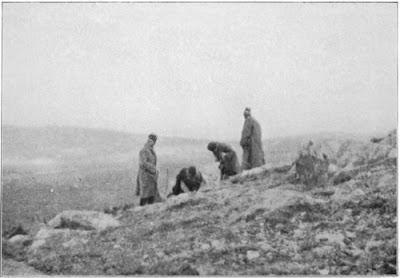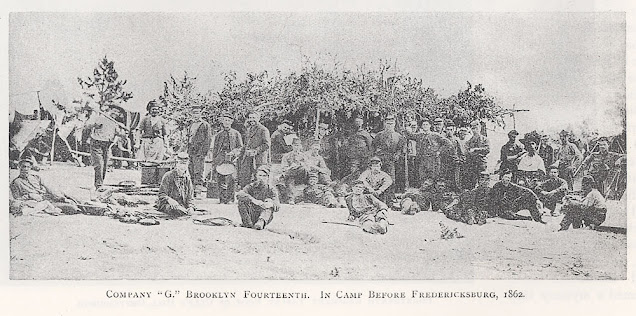Five stories of magicians in captivity before World War Two
While this blog series focuses on how magicians helped fight World War Two, the history of magicians in warfare is a long one. Taking a break from World War Two, the blog below looks at five stories of magicians in captivity in the Nineteenth Century and in World War One.
Giovanni Bartolomeo Bosco
Italian-born Giovanni Bartolomeo Bosco (1793-1863) served in the Napoleonic army’s invasion of Russia in 1812. He was injured during the Battle of Borodino on the 7 September. The fighting involved around 250,000 troops and left at least 68,000 killed and wounded, making Borodino the deadliest day of the Napoleonic Wars and the bloodiest single day in the history of warfare until World War One.
To avoid capture, Bosco pretended to be dead while lying on the battlefield. But a Cossack soldier started searching the dead bodies for loot. As the soldier searched Bosco, he realised Bosco was alive and took him prisoner. Little did he know Bosco picked the looter's pockets while this was going on.
Incarcerated in Siberia, Bosco faced immense hardship and likely death, until he discovered his talent for magic. Fellow prisoners, and even the Russian guards, ended up paying him to perform. He used his gains to ease suffering for himself and his companions. Later became one of the greatest conjurers of the Nineteenth Century, renowned for his presentation of the classic 'cups and ball' trick.
A promotional shot of Giovanni Bartolomeo Bosco
(Source: Public domain)
A later promotional shot of Giovanni Bartolomeo Bosco
(Source: Public domain)
Ernesto Patrizio di Castiglione
Another Italian, Ernesto Patrizio di Castiglione (1845-c1895), followed Bosco’s example. An artillery officer, he fought against the Austrians in the Third Italian War of Independence (1866). Captured, he used his conjuring skills to entertain the governor and staff of the fortress where he was imprisoned. He became a favourite of the Austrian guards, which allowed him to avoid unskilled labour, helping him survive through to his release a year later.
He gained fame as a magician, touring the Americas and laying claim to being the first magician to specialise in cannon ball catching (shot from a cannon)!
Ernesto Patrizio di Castiglione
(Source: Public domain)
Advertising poster for Ernesto Patrizio di Castiglione
(Source: Public domain)
Henry 'Box' Brown
During the abolitionist struggle in the U.S.A., a Virginian slave called Henry Brown (c1815-1897), used magical thinking to escape to freedom. In 1849, he had himself mailed in a wooden crate, marked “dry goods,” to abolitionists in Philadelphia, 250 miles and 27 hours away. The plan worked, and he became a celebrity for the anti-slavery movement, earning the moniker Henry ‘Box’ Brown.
He used his celebrity status to turn to the stage, earning a living as a magician and mesmerist.
A print engraving of Henry 'Box' Brown
(Source: Public domain)
A newspaper depiction of Henry 'Box' Brown's arrival in Philadelphia
(Source: Public domain)
Fred Bearns
During the U.S. Civil War (1861-1865), Fred Bearns (known professionally as the ‘High Priest of Magic’) joined the 14th New York State Militia (also called the 14th Brooklyn Chasseurs, or 14th Brooklyns). He likely fought for the Union at the First Battle of Bull Run and possibly the Second Bull Run, Antietam, Fredericksburg, Chancellorsville, Gettysburg and Spotsylvania. Eventually captured by the Confederates, they held him prisoner in their capital in Richmond, Virginia. Bearns was freed by Union soldiers at the end of the war in 1865.
He later billed himself as a ‘Returned Prisoner of War, with his Most Charming Experiments in Magic’.
An advert for the 'Most Wonderful Dice Trick' (or Die Box), a popular trick during the U.S. Civil War period
(Source: Public domain)
(Source: Public domain)
Harry Jones and Cedric Hill
In World War One (1914-1918), two officers fighting in the Mesopotamian campaign pulled off a truly cunning escape. Lieutenant E.H. (Harry) Jones (1883-1942), was a Welshman in the Indian Army Reserve. He was taken captive, along with 13,000 other troops, at Kut-al-Amara. Lieutenant C.W. (Cedric) Hill (1891-1975), an Australian, was a pilot in the fledgling Royal Flying Corps. When his B.E.2 two-seat biplane crashed, he also found himself a prisoner of war, held with Jones at a prison camp in Yozgad, Turkey.
With no end to the war in sight, the prisoners hit upon the idea of making of a makeshift Ouija board to keep themselves entertained. An amateur magician, Jones showed a natural skill for manipulating his fellow inmates as a fake medium, and Hill ably fulfilled the role of his assistant.
Between February 1917 and October 1918, Jones and Hill not only convinced their fellow inmates that they could communicate with the spirit world, but also hood-winked their Turkish captors. Along the way, they used magic tricks and deception to organise seances, ghost-guided treasure hunts, and fake suicides. Eventually, they persuaded the camp commandant to transfer them to a hospital for the mentally ill in the summer of 1918. The two men played their roles as lunatics so successfully, they also fooled the doctors and were returned home to Blighty. Ironically, they arrived home only a few months before the Turks released their brother officers from Yozgad as the war drew to a close.
Lieutenant C.W. Hill (left) and Lieutenant E.H. Jones (right)
(Source: Public domain)

A WW1 photograph, taken secretly by Cedric Hill, of Harry Jones with the POW camp commandant and others searching for buried treasure after a spirit message from a Ouija board
(Source: Public domain)
Harry Jones wrote about his wartime experiences and this novel escape in 'The Road to En-Dor' (1919) which can be read (for free) here. Cedric Hill also wrote up the story in 'The Spook and the Commandant' (1975).
Related article: Paul Potassy "Magic saved my life". Magician Paul Potassy, fighting for the German army, is overran by the Soviet enemy and plays dead to avoid capture. Blog link.
Related article: 'Evacuees: memories of magic'. World War One veteran Cedric Hill is one of many magicians who takes in evacuees or keeps them entertained during World War Two. Blog link.
Research supported by The Good Magic Award 2021 from The Good Thinking Society
*** AVAILABLE NOW ***
The Colditz Conjurer tells the amazing true story of Flight Lieutenant Vincent ‘Bush’ Parker, Battle of Britain pilot and prisoner-of-war magician.
Written by the Magic at War team, The Colditz Conjurer is a remarkable tale of perseverance, courage and cunning in the face of adversity. It features over 55 original photographs and maps. 126 pages.

















Comments
Post a Comment